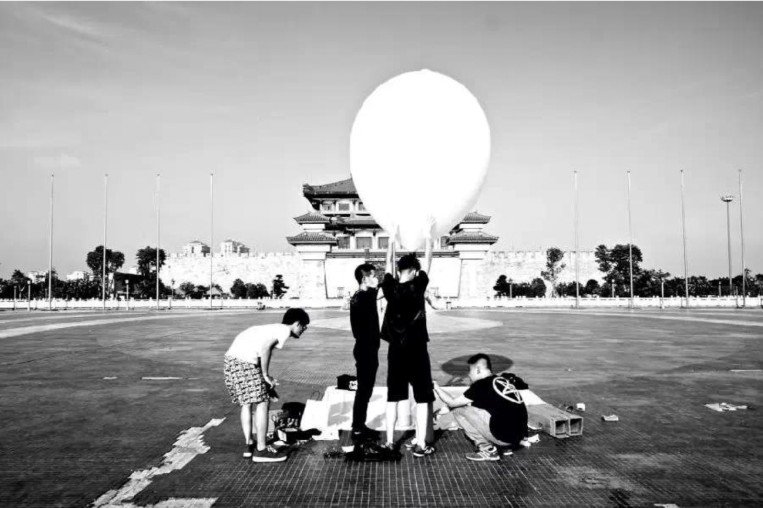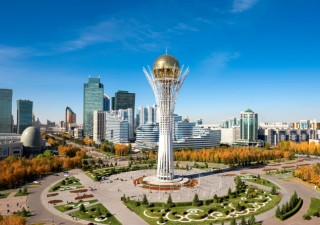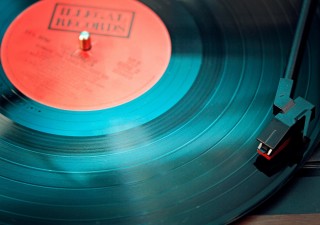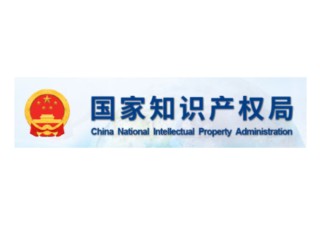Photograph copyright: The nature of non-manually filmed video images and screenshots
Stories about a boy slaying the dragon have always been captivating and thrilling, and this one is no exception. The protagonist in this case, a teenager who had not yet turned 18, took a remarkable “selfie” of the Earth with a camera fixed on a hot air balloon and wrote an article about it, titled “The Balloon Running Boy”. However, such an inspiring story was spoiled by Youku, the top video website in China at the time, which stole this creative idea and abused the photographs. Undeterred, this teenager penned another article, arguing that “Teenagers are not to be bullied,” thrusting the conflict into the spotlight and drawing the attention of both the industry and the public.
Unfortunately, the initial outcome did not align with the boy’s hopes when he tried to defend his rights. The trial at the Beijing Chaoyang District People’s Court ruled against him, stating that the images claimed, captured from the video automatically filmed by a camera fixed on a balloon, were lacking fundamental human intellectual inputs required for an act of creation. Consequently, “Earth’s selfies” failed to meet the requirements of originality for photographic works and were deemed ineligible for copyright protection. However, this ruling was overturned during the appellate process by both the Beijing Intellectual Property Court and the Beijing High People’s Court, which determined that even images captured through an automatically filmed video can be protected under copyright law.
During the appeal hearing, the Beijing Intellectual Property Court comprehensively analyzed the issues from three perspectives: first, the diversity of sources of works is not contradictory with the disparity of its elements; second, the uniqueness of the work’s utilization is not in conflict with the variability of its types; and third, it is of legal significance to determine the type of works when its individual components are used separately. After reviewing the creation process of the images concerned, the court established that the images concerned met the requirement of originality for photographic works and recognized that the screenshots captured through an automatically filmed video constituted photographic works within the scope of the copyright law.
During retrial, the Beijing High People’s Court emphasized that the images met the requirement of originality through the post-processing of screenshots with manual selection, judgment and the expression of personality. Consequently, even if the images originated from screenshots rather than manual capture, they could still qualify as photographic works after post-processing.
This case, spanning seven years and traversing first instance, second instance as well as retrial, explored complex and cutting-edge legal issues surrounding the nature of non-manually filmed video images and their screenshots. The courts analyzed these issues based on the principles of the copyright law and clarified the rules for the decisions of such cases, thereby establishing uniform judicial interpretation and judgment standards of courts at all levels on such issues. More importantly, amidst the ongoing academic and judicial debates on the hot issues regarding whether artificial-intelligence-generated content can constitute copyrightable works, this case provides valuable insight and reference by discussing and forming theoretical foundation for whether automatic photography qualifies as works.
Applied art works copyright: Industrial design being protected as works of applied art under the copyright law with flexibly adopted evidence chain regarding copyright ownership
One of our clients, a world-renowned spirits enterprise, instructed us to file a copyright lawsuit after they realized that an infringer was imitating the bottle design for their leading brand. The bottle was designed by a designer commissioned by this client and was soon applied for design patent registration worldwide in 2001 upon completion. However, the infringer, a wine company located in Guangdong Province, produced, filled and distributed brandy wines using the bottle in high similarity with the client. Therefore, a civil lawsuit about copyright infringement was filed with the trial court in Guangdong, requesting the infringer to cease producing and selling the product and the usage of the bottle plus the damage compensation.
In the trial, the Guangzhou Intellectual Property Court determined, and the Guangdong High People’s Court upheld on appeal, that the client’s bottle design constituted a work of applied art whose practicability and artistry may be conceptually separated, and that the creativity of the bottle was mainly manifested in its visually appealing design, exhibiting strong artistic nature and originality, and its simplicity and generosity which was aesthetically pleasing. Hence, the courts recognized the bottle design as a work of applied art protected by the copyright law.
The case marks the first case where the client’s bottle design has been identified as a protected work of applied art under the copyright law. Therefore, it is of particular significance to the brand owner’s protection of the product. Considering the scarcity of judicial precedents pertaining to the determination of an industrial design in the form of a spirits bottle as a protected work under copyright law, the case has offered insights for copyright protection of industrial designs, with the requirements elaborated regarding what makes a work of applied art eligible for protection of a work of fine art under the copyright law by both courts.
In addition, this case provides a reference for the evidence collection for proof of copyright ownership of industrial designs. China’s copyright law stipulates the rules regarding the proof of ownership; in this case, it was challenging to collect the evidence regarding the creation of the work because there had been years in between. The evidence at hand included patent documents and other relevant materials clearly indicating that the commissioned designer was the author of the work, and an additional declaration of copyright ownership signed by the designer submitted during the second instance, stating that all intellectual property rights including copyright to the bottle design shall be owned by the brand owner since completion of the design. This statement, with notarization and legalization, was adopted by Guangdong High People’s Court as sufficient proof of copyright ownership by the brand owner, as it found that it would be too harsh for the brand owner to provide evidence such as the contract from nearly 20 years ago to prove the relevant creation process and agreement on the copyright ownership, when the author and the brand owner did not have any dispute. Ultimately, the court held that the brand owner enjoyed the copyright to the bottle design, and the defendant engaged in copyright infringement shall stop the infringing acts and compensate for damages.
Copyright protection of figurine products in judicial practices
Recently, a case handled by HFL concerning a criminal action against counterfeit derivative products with Japanese anime characters was honored as one of the Top 10 Copyright Protection Case in 2022 by the National Copyright Administration of China (NCAC). In this case, two aspects particularly demonstrate the distinctive features of copyright protection within criminal judicial practices in China.
Firstly, the copyright of the anime and its derivative products such as figurines of the characters can be separated. A situation unique to the anime industry is that, after the rights holders of anime works produced and distributed the content, products such as figures tend to derive from highly popular characters therein, driven by the adoration of fans and their desire to collect physical versions of these characters. Due to industry segmentation, the anime rights holders typically engage toy companies in character redesign for the purpose of mass production, where readaptation and redesign inevitably occurs. Meanwhile, there are also differences between the needs of exercising the enforcing the rights concerning two-dimensional anime products and three-dimensional derivative products during the subsequent copyright protection process.
Such phenomenon is particularly obvious in the protection of figure products. In response, the more mature Japanese anime industry has witnessed effective solutions to separate and coordinate between ownership and protection needs. To be more specific, the holders of anime rights, when commissioning toy companies to redesign and recreate their two-dimensional figures, acknowledge through contractual agreements that toy companies own the independent copyright over the readapted figure products, and authorize toy companies to initiate claims against infringing figure products in their own names.
The second characteristic lies in the identification and determination of whether an infringing copy is in a replicative relationship with the genuine article. During the process of administrative and criminal copyright protection in China, given the limited knowledge of law enforcement authorities, state-accredited identification centres are introduced to take responsibility for identifying infringing copies to protect the parties from any harm resulting from random discretion of law enforcement authorities. These identification centres derive their conclusions from a third-party perspective, ensuring objectivity and preventing the arbitrary determinations of infringement solely based on the unilateral understanding of the law enforcement authorities.
Some law enforcement authorities demand identification centres to determine whether an infringing copy is in a replicative relationship with the genuine article as a basis for their decision and refuse to proceed with case handling whether identification centres can only conclude that there exists substantial similarity. This raises doubts, since the copyright law and related laws and regulations stipulate that the substantial similarity is a condition of copyright infringement. Hence, such a conclusion instead of a replicative relationship should be sufficient basis to determine infringement.









.jpg)




